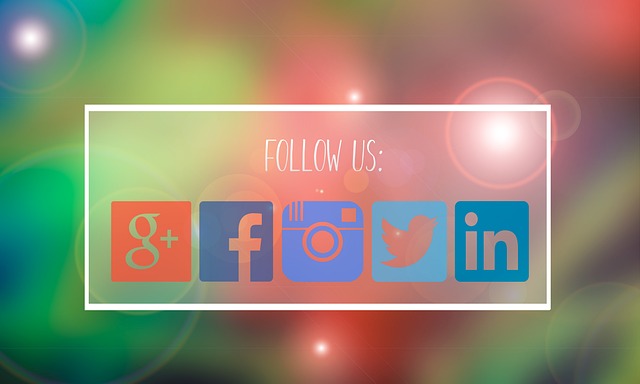
Funny print ads can make your advertising message standout. They can also make your audience laugh and remember your company and product. Your funny print advertisement will get noticed with a great idea, some humorous images and some clever art direction.
The tagline "What's a beautiful messe" may not be right for the product you're selling. It is however the most widely used tagline within the industry. This ad may be the most memorable print advertisement you've ever encountered.
It is a simple concept. It's not easy to convey your message. Even a funny print ad can convey a message quickly. You can't simply tell people your product and expect them not to buy it. In addition, you have to make the message relevant and intriguing.

A lot of print ad creators try to come up with a one of a kind ad, but it's possible to stray from the norm. Coca-cola's print ad shows two hands forming a bottle shape. However, it isn't clear what message they are trying to convey.
Shock value is another great way to grab a viewer’s attention. KFC's print advertising uses this slogan to grab attention.
There are many different types of funny printed ads. There are many types of funny print ads. You can find anything from pet training advice to snack advertising, and you will be giggling. These 48 print ads are hilarious and will make you laugh if you don't know where to look.
Remember that a print ad must be both eye-catching, and informative. This means that you must be able explain your idea in just a few words and that it should stand out from the rest. With a little luck, your ad will be remembered by its audience and will have a positive impact on your bottom line.

The best part about print ads is that they can be just the same effective as video advertisements. Print ads are not only easier to make, but they also cost less than their video counterparts. They are still more expensive than online advertisements, but offer creative control.
If you want your print ad to be a hit, you need to take the time to come up with a clever and unique design. If you use the same principles as video creation, your ad will be memorable and effective. Keep these tips in your mind to create an ad that will be memorable.
You can make your print ads stand out by creating something that the public wants. A red cap is not the best choice if you're selling miniature PEPSI cans. Use tiny pieces of frozen ice in your cans.
FAQ
How can I choose my target audience
Start with yourself and those closest to your heart. If you don’t know where or how to start, ask yourself "Whom are I trying to reach?"
Ask yourself the following questions: Who are my industry's most influential people? What problems do they have to deal with every day? Who are my top-ranking people? Where do they hang out online?
Go back to the beginning when you started your business. Why did you start? What was your problem and how did it solve?
These answers will allow you to determine who your ideal customers are. They will also reveal their personality and reasons for buying from them.
You can also look at your competitors' websites and social media pages to find clues about whom they cater to.
Once you identify your target customers, then you must decide which channels to use to reach these people. A website might be created to reach home buyers, for instance, if your business provides services to agents in real estate.
If your company provides software to small businesses, you might consider creating a blog for those owners.
You could also create a Facebook account for teens if you sell clothing. A Twitter account could be set up by restaurant owners to allow parents to search for places that are kid-friendly.
You have many options to convey your message.
Advertising: What does it mean?
Advertising is an art. It's not just about selling products. It's about building emotional bonds between brands and people.
Advertising is about communicating ideas through images and stories.
It is important to communicate clearly and persuasively. And you need to tell a story that resonates with your target market.
This makes advertising different from other forms of communication, such as public speaking, writing, or presentations.
You are building a brand identity when you run a successful advertising campaign.
This is how to be remembered. People want to remember you.
How much does it cost to advertise on social media?
It is important to know that advertising on social media platforms is not free if you decide to do this route. You will be charged monthly for your time spent on each platform.
Facebook - $0.10 per 1000 impressions
Twitter: $0.20 per 1,000 impressions (if your tweet is on Twitter)
Linkedin - $0.30 per 1,000 impressions if you send out invitations
Instagram - $0.50/1000 impressions
Snapchat – $0.60 per 1,000 impressions ($0.40 for each user)
YouTube – $0.25 per 1000 views
Tumblr: $0.15 per 1,000 impressions of text posts
Pinterest - $0.05 per 1,000 impressions per month
Google + $0.15-$0.20 for 1,000,000 impressions
Tumblr - $0.15- $0.20 per 100,000 impressions
Vimeo - $0.20 to $0.25 per 10,000 impressions
Soundcloud - $0.20 - $0.0.25 for 1,000,000 plays
StumbleUpon - $0.20 -$0.25 per 1 billion pageviews
Digg – $0.20 - 0.25 per 1000 diggs
Reddit $0.20-$0.25/1000 comments
Wordpress - $0.20 - $0.25 for 500 comments
Flickr - $0.20 -- $0.25 per 5,000 photo uploads
What should you know about printing advertising?
Print advertising is a good medium to communicate effectively with consumers. Print advertising is used by many companies to promote their products and services. The main goal is to catch the attention and buy from the consumer.
Print ads are usually short (one page) and contain text, pictures, logos, and other graphics. You may also find sound, animation, video and hyperlinks.
These are the main types of print ads:
1. Brochures – These are large format printed pieces that are intended to draw people into stores. They are often filled with colorful images and catchy designs.
2. Catalogues - These are smaller versions of brochures. They are typically sent to customers who have requested information on specific items.
3. Flyers - These small pieces of paper are distributed at events like fairs and concerts. If they are given out at retail outlets, they can be obtained for free, but you must pay for them.
4. Posters - These flyers can be larger than the ones you see on the flyer. They are often displayed on walls, fences, or buildings. They are usually created using computer software programs designed to catch passersby's attention.
5. Direct mail: These are postcards or letters that are sent directly by post to potential customers. These cards are sent by companies periodically to remind their customers about their company.
6. Newspaper Ads – These are ads that appear in newspapers or magazines. They can be quite lengthy and often include text as well as images.
What should you know about TV advertising?
Television advertising is a very effective medium to reach many people at once. It was also expensive. However, it can be powerful if you use the device correctly.
While there are many types and styles of TV ads, most share some common traits. Planning any TV ad should start with ensuring it fits in its category. If you're running a product commercial, don't try to run a lifestyle commercial as a product commercial. Your message should be consistent across the entire campaign.
Second, prime-time hours are the best times to air your ads. This is because the majority of viewers will watch TV while they relax in front a set. You want them to be able focus on your words and not get distracted by the TV.
Last but not least, just because you have a lot of money does not mean that you will get great results. Actually, it could be the contrary. A University of California study found that commercials broadcast during popular shows had a lower chance of selling products than those broadcast during less-popular shows. You should ensure that you spend your money wisely if you plan to advertise on television.
What is an advertising buyer?
An advertiser purchases advertising space on TV, radio or print media.
Advertisers pay only for the time their message is to appear.
They are not necessarily looking for the best ad but rather what is most effective at reaching their target market.
An advertiser might have details about potential customers, including their age, gender and income.
The advertiser can use this data to determine which medium will work best for them. They may decide that direct mail works better with older people.
Advertisers also look at the competition. If there are similar businesses nearby, they might choose to place their ads near those competitors.
Advertisers should also consider how much money they have available and how long it takes to use it.
What is the primary purpose of advertising?
Advertising isn't just about selling products. It's also about creating an emotional connection among your customers and you.
Advertising is about communicating values and ideas to people who are interested in your products or services. Advertising is about changing minds and attitudes. It's about building trust.
It's all a matter of making people feel good.
But, if you don’t have a clear understanding of your customers’ needs, you will not be able sell anything.
So before you start any advertising project, you should first understand your customer's needs and wants, and buying habits.
This will allow you to create ads that resonate with your target audience.
Statistics
- It collects money from the advertisers, keeps 32% for its role in facilitating the process, and the remaining 68% goes to the publisher (you). (quicksprout.com)
- In 1919 it was 2.5 percent of gross domestic product (GDP) in the US, and it averaged 2.2 percent of GDP between then and at least 2007, though it may have declined dramatically since the Great Recession. (en.wikipedia.org)
- Advertising's projected distribution for 2017 was 40.4% on TV, 33.3% on digital, 9% on newspapers, 6.9% on magazines, 5.8% outdoor, and 4.3% on radio. (en.wikipedia.org)
- Worldwide spending on advertising in 2015 amounted to an estimated US$529.43 billion. (en.wikipedia.org)
External Links
How To
How to run paid ads
Paid advertising refers to any marketing activity where you pay money for something. This could be buying advertising space on websites, placing advertisements into newspapers and magazines, or paying someone for online promotion. You can also pay for paid advertising through email marketing, social media, display advertising and search engine optimization (SEO), as well as mobile app promotion and influencer marketing.
Your campaign should be cost-effective and deliver the desired results. Also, consider whether you can get enough return-on-investment (ROI), to justify the expense.
Before you can start a paid marketing campaign, you need to first identify potential customers for the product or service. If you don't know where to start, try free advertising such as posting flyers around your area, making announcements at school or sharing your message via social networking sites.
Once you have identified your target audience, it is possible to decide which way to reach them. Advertising in classifieds in local newspapers is a good way to advertise if you sell organic food. On the other hand, if you sell cosmetics, you might choose to advertise on TV or radio stations.
Once you have decided who you want to reach out to, it is time to determine how much money you are willing to spend. There are several ways to calculate your budget. The first is to divide the budget into daily or weekly, monthly, quarterly, annual, and/or quarterly amounts. Another way to do this is to use a spreadsheet software.